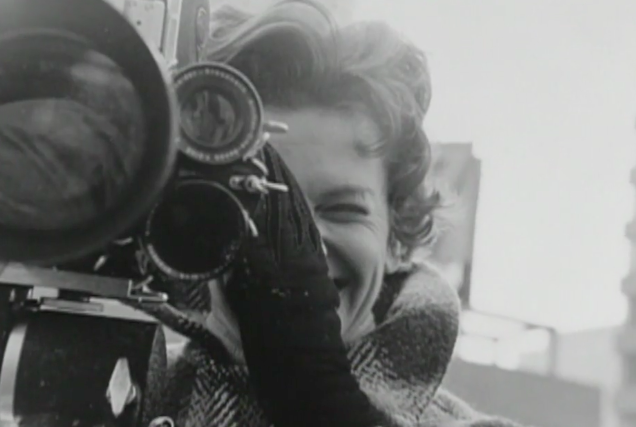By Barbara Matusow
When TV producer Ruth Pollak got the idea in the early 90’s to create a documentary about the fight for women’s suffrage, the first thing she did was to find out if she had any competition. “I was sure somebody else would have done the story of the passage of the legislation by then. It is just so dramatic,” she says. “But here was nothing.”
Ruth was lucky. On her second try with the National Endowment for the Humanities, she and her company were awarded nearly a million dollars to write and produce a two-hour program, One Woman, One Vote, which was aired on the PBS series “The American Experience” in 1995. “It probably wouldn’t sound like much to Ken Burns, she says, but to me it was a fortune.”
Looking back, she still regards the grant as “miraculous.” But the project had a lot going for it--a passionate writer-producer, an amazing story, and a surge of interest in the decades-long, bitter struggle by women to win the right to vote.

A home-based wife who raised 4 children, Ruth started looking around for a job after her youngest was in school. At the time, she and her neighbor were volunteering to sing and play guitar at inner-city schools and churches. “The next thing I knew, I got a phone call from an educational TV station in northern Virginia. They had a grant to do a children’s program, and they asked me if I wanted to produce it.” She did, and before long, Ruth and two other producers formed their own company, the Educational Film Center, (EFC), to create television shows for kids. “I went from being a mom, a would-be magazine writer, a guitar player, and a folk singer to being a TV producer. I really had almost no credentials.”

Ruth laughs recalling the National Academy awards banquet when one of those early shows, Inside Out, won an Emmy in 1974. “We were up against Sesame Street, which had won the two previous years. And they were all there in costume, obviously expecting to win. When the presenters called out ‘Inside Out’, Big Bird, who was about 6 feet four, got up, beak flapping, and yelled, ‘What the hell is an Inside Out?’ We of course, were in a total state of shock.”
Eventually Ruth and EFC shifted to producing material for grown-ups, including feature-length PBS specials such as The Odyssey of John Dos Passos (1994) and “Harry Hopkins at FDR’s Side” (1989). But it was the suffrage story and its rich cast of characters—heroic women like Susan B. Anthony, Elizabeth Cady Stanton, Alice Paul, and Carrie Catt—which captivated her. “I was just always interested in strong women and strong characters,” she explains. “It’s been woven into everything I ever did. And it goes way back with me. Recently, I came across my application essay to Sarah Lawrence college. It was all about women speaking up and not letting the boys do all the talking--about the need to be an equal person in this world.”
One problem with producing One Woman, One Vote was how to bring a bygone era to life when the story ends in 1920,. That was the year the 19th amendment to grant women the vote finally passed and there is not a lot of film from that time. “But there was some, and I spent months wearing white gloves, plowing through box after box of materials.,” she recalls.
Eventually, Ruth collected film and stills from 140 sources, weaving a rich, authentic portrait of the suffragists over 70 plus years—their parades, their meetings, their banners, their rousing songs, and the actual words the leaders spoke. “We used actors’ voices,” she says. “But there is not a single word that any character speaks that didn’t come from their letters or speeches. That was very important to me.”

One thing the film does not do is whitewash either the divisions among the suffragists or the racism so prevalent in their ranks; they were afraid that including the black woman in their demands would antagonize the Southern Senators whose support they courted. “Anthony and Stanton were great women, but they were terrible on the subject of race,” says Ruth. “They actually campaigned against the post-Civil War amendment giving the black man the right to vote because it did not include all women. Anthony famously said, ‘I will cut off this right arm of mine before I will ever work or demand the ballot for the Negro and not the woman.’”
When long-time colleague, Bonnie Nelson Schwartz, the Co-Director of the 2020 One Woman One Vote Festival came to Ruth in 2016 with the idea of using her film as the inspiration for a festival to celebrate the 100th Anniversary of the 19th Amendment—using the iconic title of “One Woman, One Vote,” she immediately agreed. She also agreed to serve as the festival’s liaison to historians.
“Ruth has seen a lot of changes for women in the film community during her career,” notes Bonnie. “She is a role model, a mentor, and an inspiration for all of us who have been fortunate enough to follow in her footsteps and help continue her work in making a difference for all women.”
But we’ll let Ruth have the last word. “I don’t think there is another story that is more powerful as an example of how hard it’s been for women to take their rightful place in the world than the battle to be allowed to vote and how much men did not want women to vote,” says Ruth. “I want young women to appreciate what these women did for them.”
ABOUT THE AUTHOR

